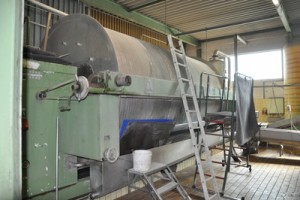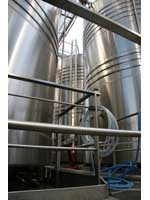David on Technical Topics – The Cognac Wines
For many years, cognac quality has centred mainly on the distillation process and the basic needs of providing a relatively acidic and low alcohol wine. After the Phylloxera, in the late nineteenth century, viticulturists started to recognise the need to control the wine, harvest and production methods to a far higher level. The St Emillion (Ugni Blanc) grape, favoured for its resistance to disease and greater cropping, became the dominant variety and a key part of modern cognac wines.
The increasing demand on the industry for more cognac created further demands on the viticulturist to provide greater quantities of clean (low in sulphur dioxide), low alcohol wines for distillation. Regulations introduced in the 1930s banned the use of continuous wine presses that crushed the grapes since the additional pressure produced an undesirable stream of tannic and oily substances from the pips. In their place, modern rotating drum presses gently release the juices from the undesirable pips and skins.
distillation. Regulations introduced in the 1930s banned the use of continuous wine presses that crushed the grapes since the additional pressure produced an undesirable stream of tannic and oily substances from the pips. In their place, modern rotating drum presses gently release the juices from the undesirable pips and skins.
Although climatically the Charente region is better suited to growing cognac vines than its surrounding regions, sun, rain and occasionally frost can have a severe effect on the wines produced. The Ugni Blanc matures late and is often not ready for harvesting until late October. In exceptionally cold conditions, when the grapes are picked cold, difficulties with fermentation occur creating a wine that is both thin and flat and which develops further difficulties in distillation. Perhaps a bigger problem with the weather, especially with more recent climatic changes, is the warmer autumns that create greater sugar levels in the grapes thus making a stronger and sweeter wine. The fully ripe Ugni Blanc grapes will produce a wine around 11 percent abv so the trick is to harvest just before they obtain maximum ripeness; an ideal strength is around 9 percent abv. The vintages of 1976 and 1989 are a case in point – wines often exceeded 11 percent abv making the fermentation too quick and the ethanol produced too great. This can create a cognac that is flabby and generally tasteless. Rain can also create problems especially in the summer when the grapes are filling out. The damp and warm conditions will allow fungus and rot in the tightly formed clusters so regular, preventative spraying is critical.
Even today wine making skills are still fairly basic. The wine is usually transferred into concrete,  or in some more modern cases fibreglass lined metal tanks, for a quick malolactic fermentation. Special yeasts developed by the Station Viticole, the technical division of the BNIC, are used to encourage faster fermentation, a process that should take about six weeks. The longer the period of time between the fermentation and distillation the more the valuable esters that react with the tannins in the oak are lost. Many distillers will use the lees, in effect the pulp of the grape, to add further individuality and flavour to their distillations. A director of the Station Viticole once pointed out that it relies on nature, “We adapt our wine making skills to the needs of the still”. For all they are doing, he says, is preserving the interesting elements in the juice. The better the wines produced the greater opportunity there is to make the finest cognacs, like Hermitage.
or in some more modern cases fibreglass lined metal tanks, for a quick malolactic fermentation. Special yeasts developed by the Station Viticole, the technical division of the BNIC, are used to encourage faster fermentation, a process that should take about six weeks. The longer the period of time between the fermentation and distillation the more the valuable esters that react with the tannins in the oak are lost. Many distillers will use the lees, in effect the pulp of the grape, to add further individuality and flavour to their distillations. A director of the Station Viticole once pointed out that it relies on nature, “We adapt our wine making skills to the needs of the still”. For all they are doing, he says, is preserving the interesting elements in the juice. The better the wines produced the greater opportunity there is to make the finest cognacs, like Hermitage.
